Developing post-trauma anxiety or PTSD is a normal response to the pain you suffer. Experiencing trauma can lead you to exhibit several anxious responses; read on to know more about these 10 anxious behaviors that are actually trauma responses.
Key Points:
- Viewing anxious behaviors through a trauma-informed lens teaches us that there is usually a reason for them.
- Developing an understanding of our anxious behaviors can show us that there is nothing “wrong” with us.
- Learning not to take things personally can help us understand loved ones with the same traits.
- Having a few of these behaviors is normal, but if you can relate to many of them, it may indicate anxiety.
All people have peculiar behaviors. Sometimes they are not weird at all to us, yet may appear odd to an outside observer. While many behaviors are just, well, human, sometimes they can be due to anxiety.
Some of the stereotypical traits of anxiety include nervousness, fear of speaking in public, or fear of being in crowds. But many forms of anxiety are not as obvious, like that of people who actually prefer being in a crowd, yet dread a 1-on-1 coffee meetup.
No matter their level of recognition, many anxious behaviors may be linked to some experiences of childhood trauma. Research has demonstrated a link between trauma and many symptoms of anxiety, finding that our experiences in childhood and beyond often lead to behavior manifestations present well into adulthood.
A fear of being negatively viewed or evaluated manifests in many different ways. Many survivors of childhood trauma fear being put in a situation from which they cannot escape, such as having other people in their homes or safe spaces, and this can lead to a multitude of avoidance behaviors. The “trauma brain” wants to avoid any experience that reminds us of a time when we were unable to escape from discomfort.
These responses manifest in many different areas of a person’s life. While many of these are experienced by people who have not had trauma, and can be explained by other means, I find that these 10 are some of the most common anxious responses that I see in my personal life and in my therapy practice:
Related: 30+ Interesting Facts About PTSD
Post-trauma Anxiety: 10 Anxious Behaviors That May Actually Be Trauma Responses
1. Not Answering The Phone, Or Avoiding Making Calls.
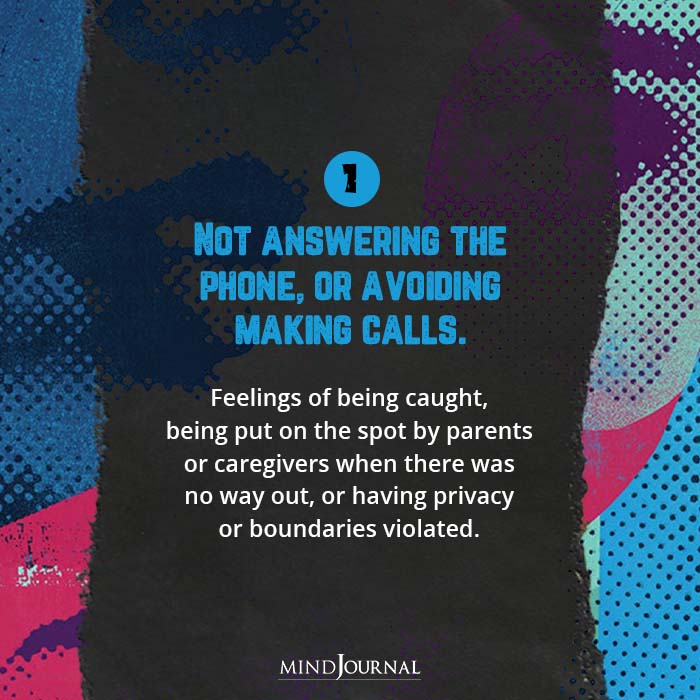
This one might seem obvious, and in my millennial social circle, it is not even seen as weird. To someone who does not have social anxiety, answering the phone might seem like a simple task, and avoiding it might just look like laziness.
However, what separates this from normal laziness or avoidance is the adrenaline and cortisol spike that follows for someone who has a trauma history. While simply ordering takeout or confirming the grocery list with a partner can be a neutral experience, answering an unexpected call inspires fear that the act might lead to a conversation in which we may be put on the spot. This is reminiscent of feelings of being caught, being put on the spot by parents or caregivers when there was no way out, or having our privacy or boundaries violated.
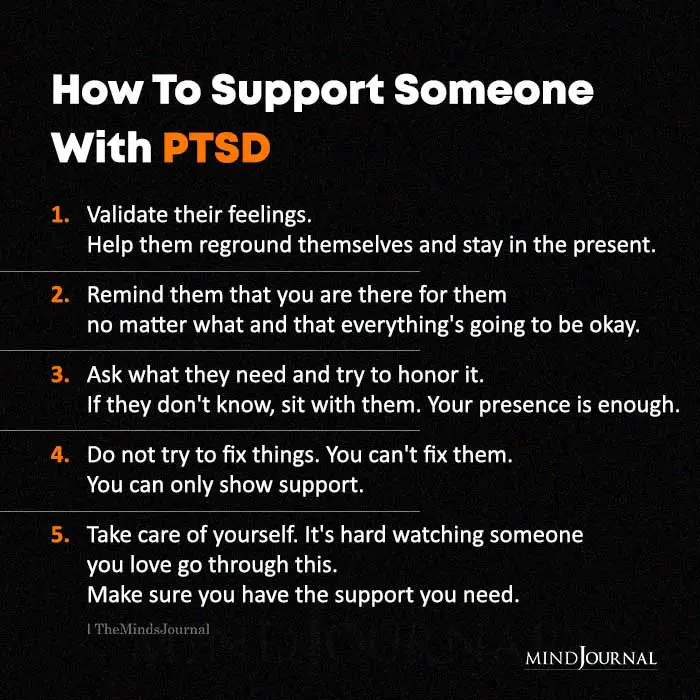
2. Shutting Down Or Being Silent In Groups And Other Social Settings.

If this seems like obvious social anxiety, sometimes it is. Many forms of social anxiety can be the result of growing up in a chaotic environment, where our nervous system is constantly dysregulated, or where we constantly having to be “on”—ready to take care of someone else, or ready for a verbal altercation.
As a result, adult trauma survivors sometimes have experiences of being overstimulated during social settings. Situations where we are expected to present with a high level of engagement can be draining, and it may feel like there is no way to get a mental break. Instead, we “check out”—by looking at our phone, going to the bathroom to be alone, or becoming silent. In contrast, many people with social anxiety find that this experience is actually more stressful than being in a large crowd where we are not under any pressure to engage socially.
Related: Past Life Traumatic Stress Disorder: Carrying Unhealed Emotional Trauma From Your Past Life
3. Being Nervous Or Uncomfortable When Someone Sits Too Close To You.
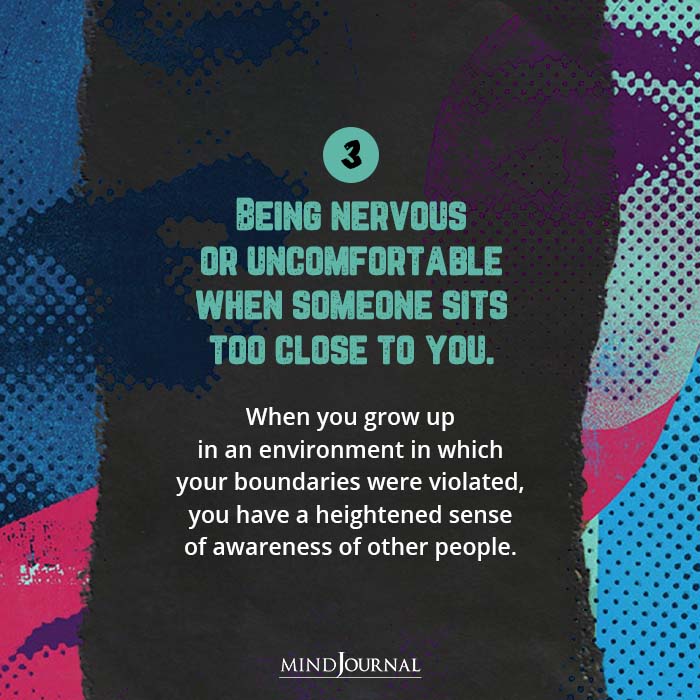
This is so common that there are memes based around the humor of this shared experience. Many people with social anxiety love having the movie theatre to themselves, or at least with large spaces in between them and the next group.
Having an unknown person sitting next to them at the movies instead can actually make an anxious person unable to focus on the film due to being so hyperaware of the close proximity to another person. When we grew up in an environment in which our boundaries were violated, we had a heightened sense of awareness of other people, and our position within a crowd or in a room. Therefore, having a large personal bubble becomes essential to maintaining internal comfort.
4. Needing To Sit In Certain Places Or Areas During Restaurant Visits Or Social Events.
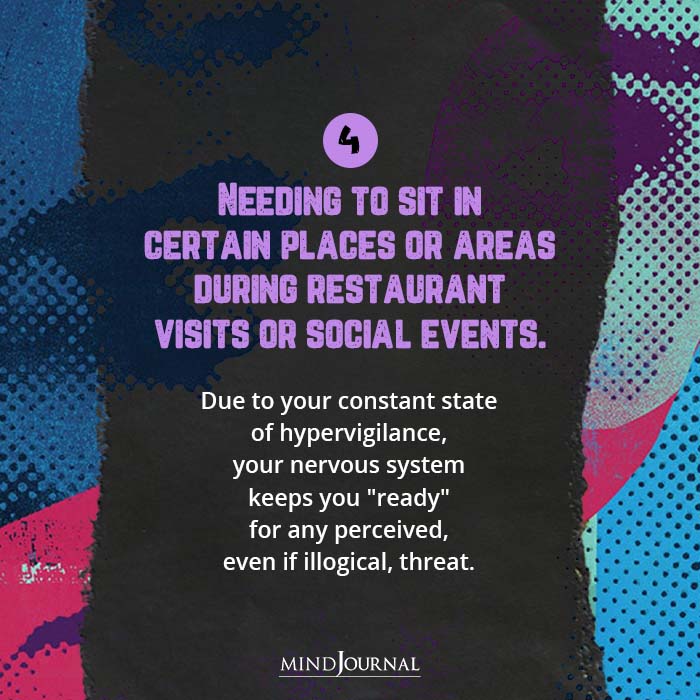
Many survivors of trauma report that they prefer to sit with their back to a wall, as opposed to a door or open space. Due to their constant state of hypervigilance, their nervous system keeps them “ready” for any perceived, even if illogical, threat. Sitting where they can observe the room and those within it seems to calm that nervous tension, even if just for the moment.
5. Overeating Or Overdrinking.
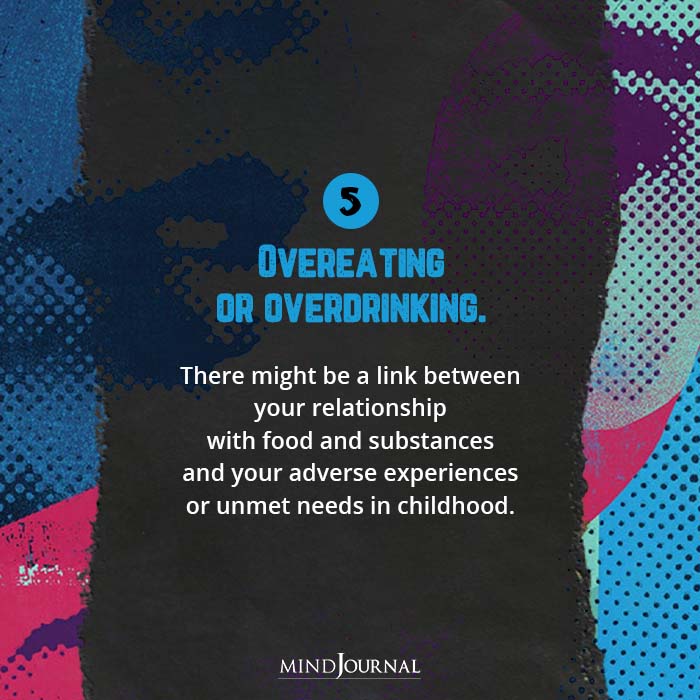
Trauma survivors develop ways of self-soothing, often in the form of either indulging in or avoiding food or substances. In recent decades, the health industry has developed an increased understanding of the link between trauma and anxiety around food or drink. “People who have eating disorders frequently have a history of adverse childhood experiences and trauma” (Jones, 2021). While not all unhealthy patterns of eating or substance use will meet the criteria for a disorder, there is still often a link between one’s relationship with food and substances and adverse experiences or unmet needs in childhood.
6. Becoming instantly nervous when someone is knocking on your door who is unexpected/uninvited.
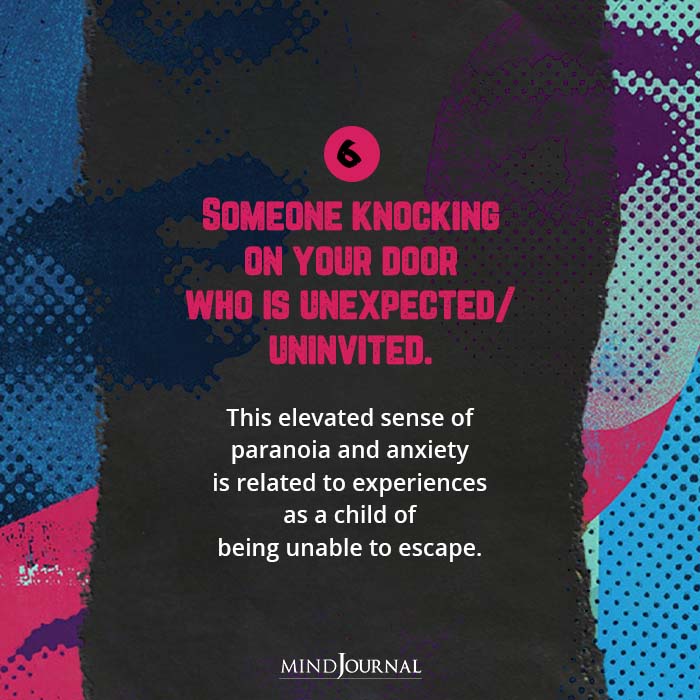
I once joked that there are two types of people: those who answer the door when they hear a knock, and those who hide and wait for the person to leave. All joking aside, I was in my 30s before I realized that my reaction to an unexpected knock on my front door was not something that everyone had. Often this elevated sense of paranoia and anxiety is related to experiences as a child of being unable to escape.
Related: The Long-Term Effects of Childhood Trauma In Adulthood
7. Constantly Apologizing, Even For Things That Aren’t Your (Or Anyone’s) Fault.
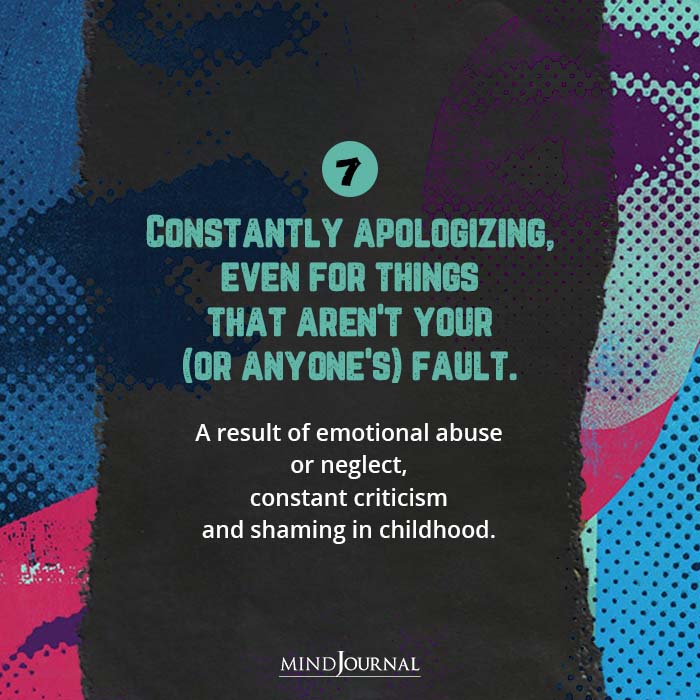
When we are constantly criticized, or consistently made to feel that everything is our fault, we develop a strong sense of shame. This manifests in a constant need to over-apologize, even when you have not done anything wrong. This is often a result of emotional abuse or neglect in childhood.
8. Having A Heightened Startle Reflex.

When the nervous system is constantly dysregulated, it is common to have a heightened response to noises or stimuli that others might not notice or be bothered by. Having an increased startle response, or being “jumpy,” is correlated with childhood trauma and abuse.
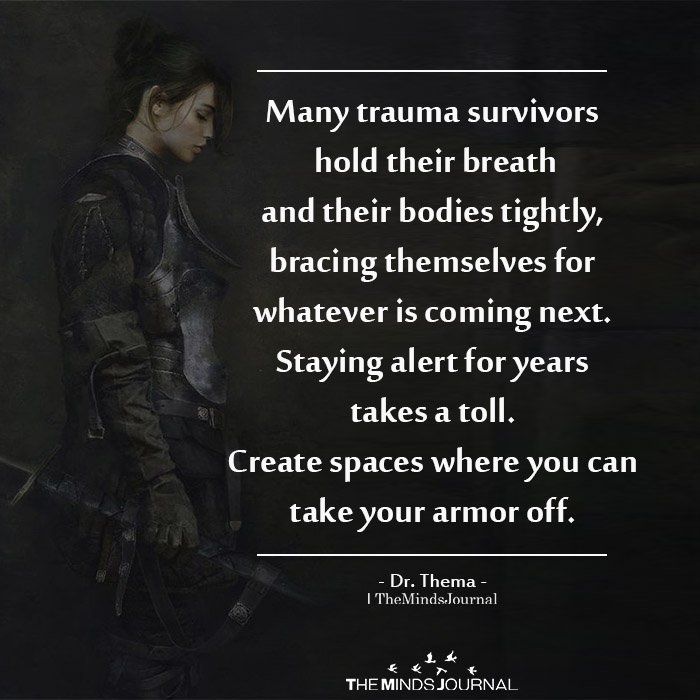
9. Not Wanting To Have People Over To Your House Because You Cannot Control When They Leave.

This is often due to not being able to control your own safe space, such as growing up in a home in which boundaries were blurred and privacy was violated.
Related: Suffered Trauma? 7 Keys To Unlocking Post-Traumatic Growth
10. Being More Comfortable Around Certain People Than Others.
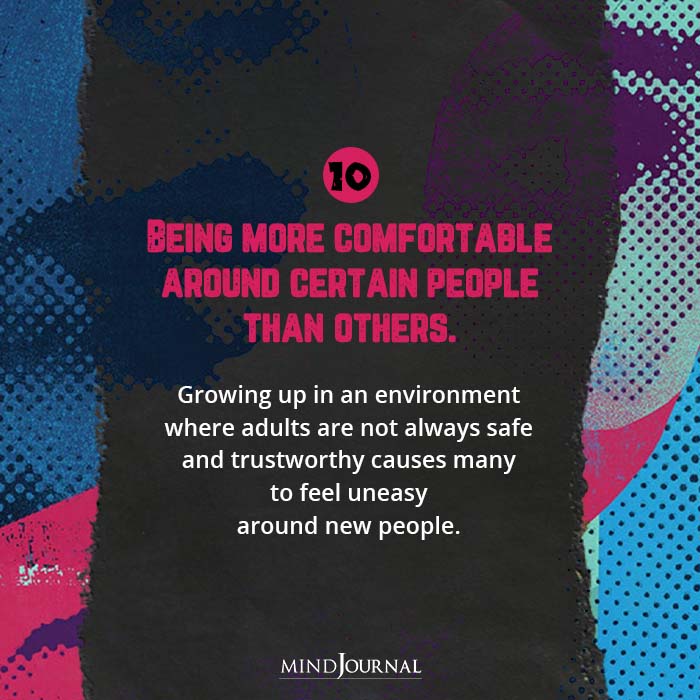
Growing up in an environment where adults are not always safe and trustworthy causes many to feel uneasy around new people. Trauma survivors have a heightened sense of who they feel comfortable or “safe” with.
Want to know more about Post-trauma Anxiety and anxious trauma responses? Check this video out below about post-traumatic stress disorder!
References:
Tull, Matthew, 2020. The Relationship Between PTSD and Social Anxiety Disorder. https://www.verywellmind.com/ptsd-and-social-anxiety-disorder-2797528. Accessed 5/11/2022. Ginny Jones. How adverse childhood experiences influence eating disorders. 2021. https://www.pacesconnection.com/blog/how-adverse-childhood-experiences-…. Accessed 5/14/2022.
Written By Kaytee Gillis, LCSW-BACS Originally Appeared On Psychology Today
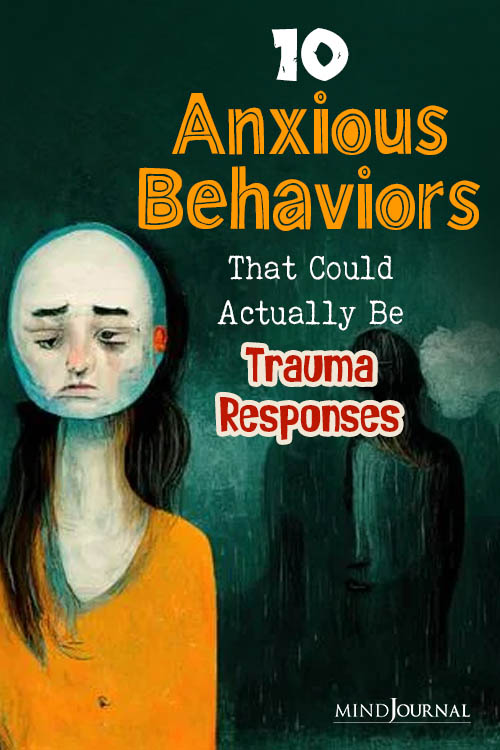

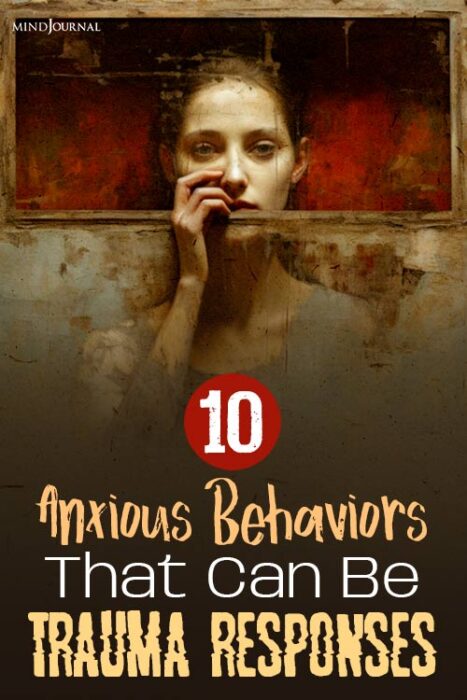
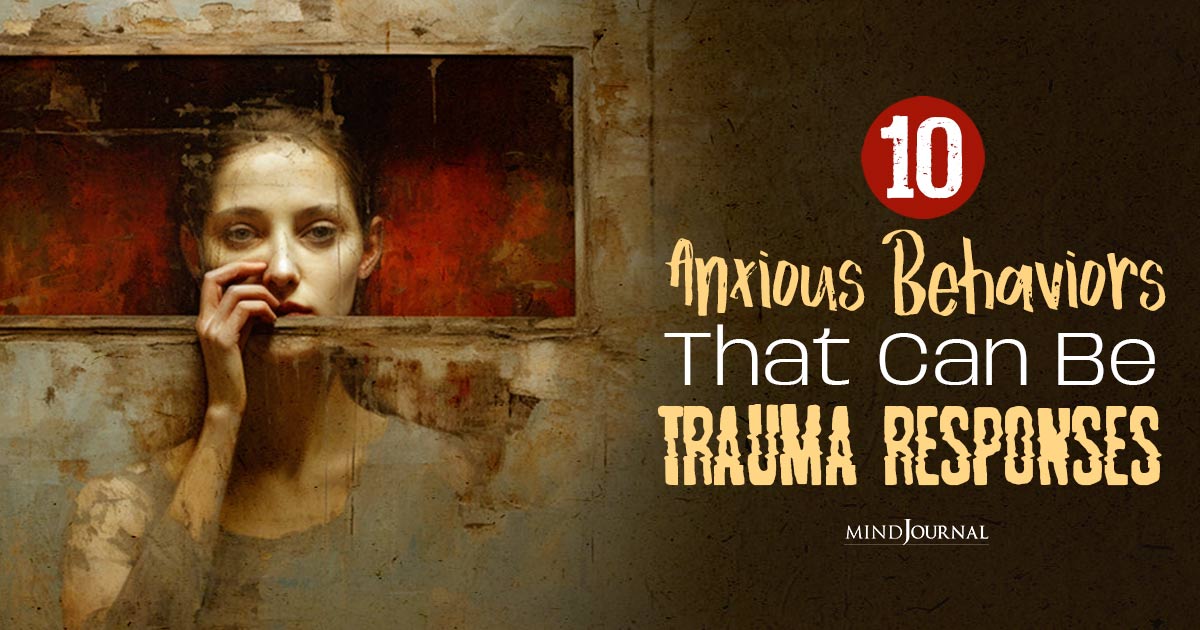
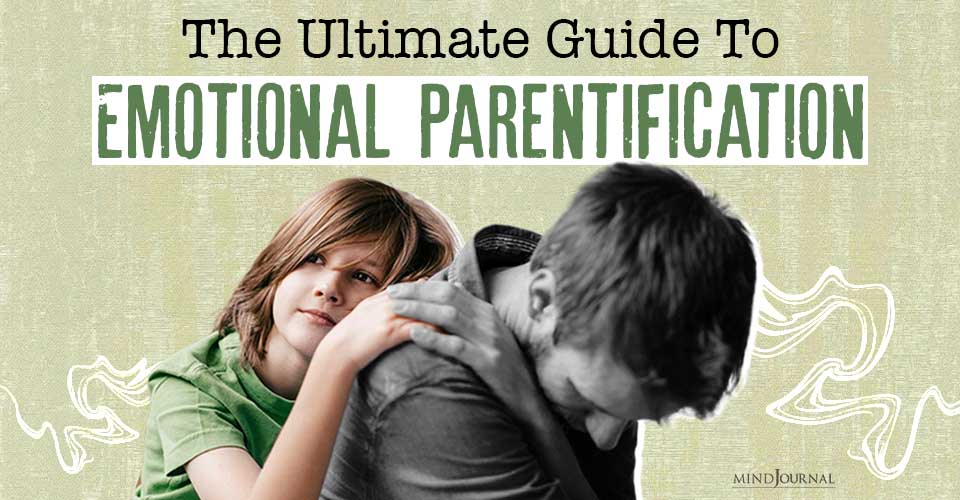
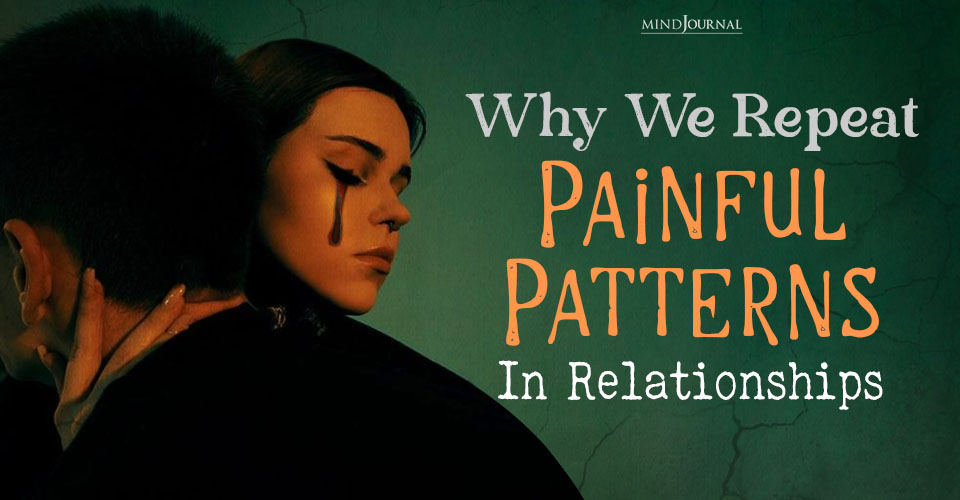
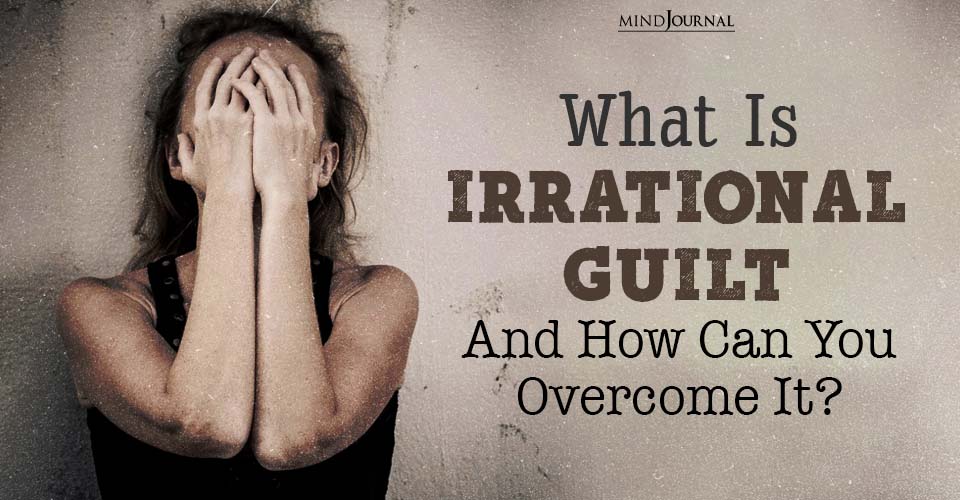
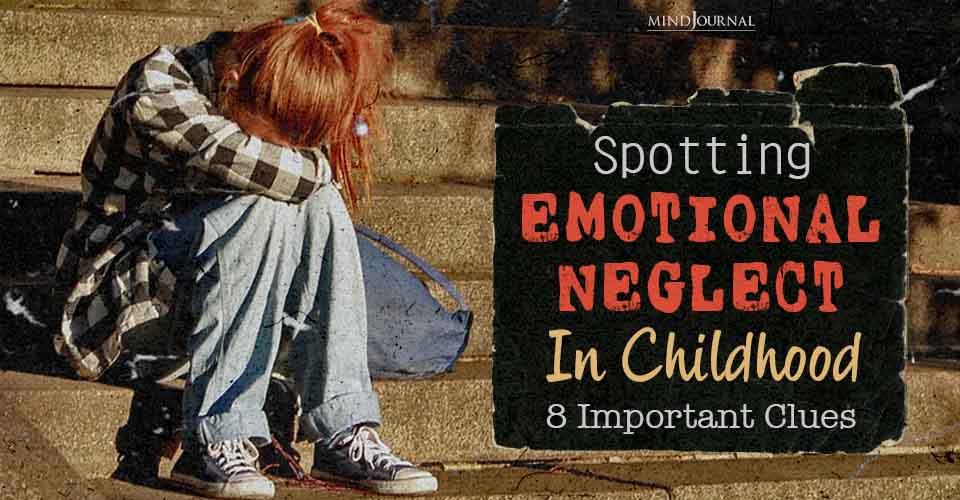
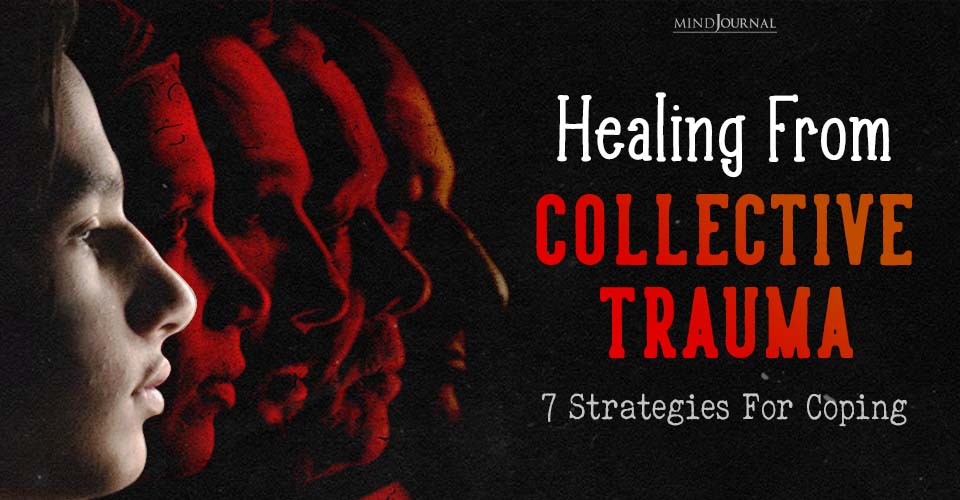
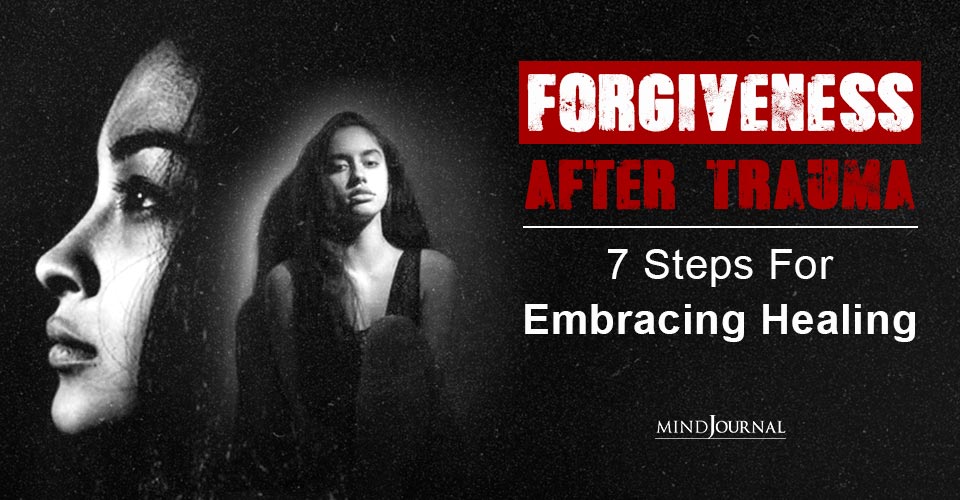
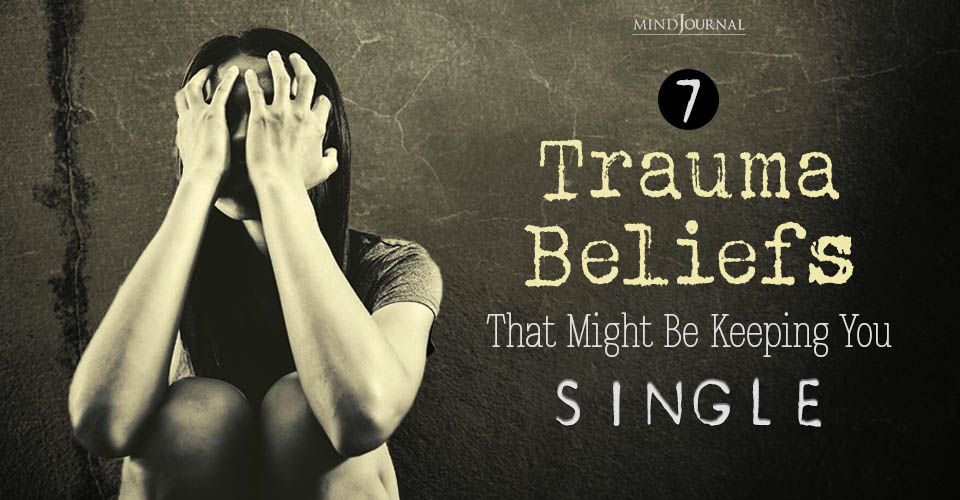
Leave a Reply
You must be logged in to post a comment.